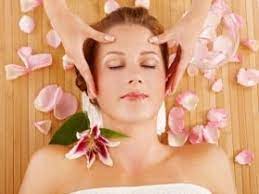
Holistic therapies focus on treating the whole person—mind, body, and spirit—rather than just addressing specific symptoms. These therapies aim to promote overall wellness and balance. Here are some key holistic therapies and their benefits:
Key Holistic Therapies
- Acupuncture
- Description: Involves inserting thin needles into specific points on the body to balance energy flow.
- Benefits: Reduces pain, alleviates stress, improves sleep, and enhances overall well-being.
- Aromatherapy
- Description: Uses essential oils from plants for healing and relaxation.
- Benefits: Reduces stress, improves mood, enhances relaxation, and may help with various health issues.
- Chiropractic Care
- Description: Focuses on diagnosing and treating mechanical disorders of the musculoskeletal system, especially the spine.
- Benefits: Reduces pain, improves mobility, and enhances nervous system function.
- Herbal Medicine
- Description: Uses plant-based remedies for therapeutic purposes.
- Benefits: Treats various health conditions, supports the immune system, and promotes overall health.
- Homeopathy
- Description: Uses highly diluted substances to stimulate the body’s natural healing processes.
- Benefits: Treats a wide range of conditions, from chronic illnesses to acute ailments, with minimal side effects.
- Massage Therapy
- Description: Involves manipulating the body’s muscles and soft tissues.
- Benefits: Reduces muscle tension, alleviates pain, improves circulation, and promotes relaxation.
- Meditation and Mindfulness
- Description: Practices that focus on quieting the mind and being present in the moment.
- Benefits: Reduces stress, improves mental clarity, enhances emotional well-being, and promotes relaxation.
- Naturopathy
- Description: Emphasizes natural remedies and the body’s ability to heal itself, combining various therapies.
- Benefits: Treats a range of health issues, promotes preventive health care, and encourages healthy lifestyle changes.
- Reiki
- Description: A Japanese technique for stress reduction and relaxation that also promotes healing, involving “laying on hands.”
- Benefits: Balances energy, reduces stress, promotes relaxation, and supports healing.
- Yoga
- Description: Combines physical postures, breathing exercises, and meditation.
- Benefits: Improves flexibility, strength, and balance; reduces stress; and enhances overall well-being.
Benefits of Holistic Therapies
- Personalized Treatment: Therapies are often tailored to the individual’s specific needs and conditions.
- Natural Healing: Emphasizes the use of natural remedies and the body’s inherent ability to heal.
- Comprehensive Care: Addresses multiple aspects of health—physical, emotional, mental, and spiritual.
- Preventive Approach: Focuses on maintaining health and preventing illness rather than just treating symptoms.
- Minimal Side Effects: Many holistic therapies have fewer side effects compared to conventional treatments.
- Enhanced Quality of Life: Promotes overall well-being and a higher quality of life.
Integrating Holistic Therapies into Your Life
- Consult a Professional: Seek advice from a qualified holistic health practitioner to develop a personalized plan.
- Start Gradually: Incorporate one or two therapies into your routine and gradually add more as you become comfortable.
- Combine Therapies: Many holistic therapies complement each other and can be combined for enhanced benefits.
- Lifestyle Changes: Integrate holistic practices with healthy lifestyle changes, such as a balanced diet, regular exercise, and adequate sleep.
- Stay Informed: Educate yourself about the various holistic therapies and their potential benefits and risks.
Example of a Holistic Wellness Routine
Morning:
- Meditation: 10 minutes of mindfulness meditation to start the day with clarity.
- Yoga: 30-minute yoga session to stretch and energize the body.
- Healthy Breakfast: A nutrient-rich meal with whole foods and herbal tea.
Afternoon:
- Aromatherapy: Use essential oils like lavender or peppermint to stay focused and relaxed.
- Balanced Lunch: Include a variety of vegetables, lean proteins, and whole grains.
Evening:
- Acupuncture Session: For relaxation and addressing any specific health issues.
- Light Dinner: A balanced, light meal to end the day.
- Relaxation: A warm bath with essential oils or a massage to unwind before bed.
Finding the Right Practitioner
- Research Credentials: Ensure the practitioner is certified and experienced in the specific therapy.
- Read Reviews: Look for testimonials and reviews from other clients.
- Consultations: Schedule consultations to discuss your needs and see if you feel comfortable with the practitioner.
- Ask Questions: Don’t hesitate to ask about their approach, treatment plans, and expected outcomes.
By integrating holistic therapies into your life, you can achieve a balanced approach to health and wellness. If you have any specific questions or need further information on any of these therapies, feel free to ask!
4o





